Can The East 16th Street Zombie Lot Rise From The Dead?
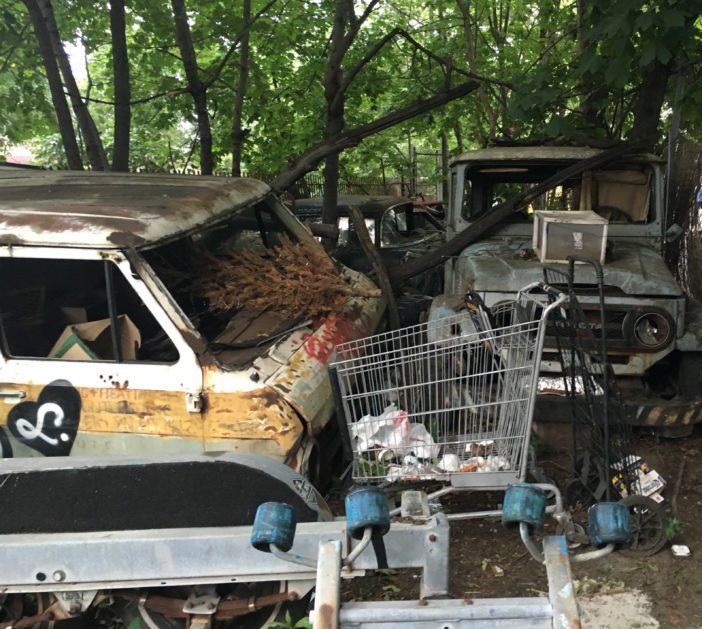
The hulking, rusting trash heap growing in the vacant lot at 210 East 16th Street, behind the Beverley Road Q station, has taken on a life of its own. But this is far from news — as many neighbors know, the forgotten, amorphous lot has been in limbo for more than a decade.
Abandoned properties are sometimes referred to as zombie lots, and this one is teeming with the undead; a dozen junked, antique cars and jagged scraps of metal scrawled with graffiti punctuate fallen branches, overgrown weeds, and piles of fast-food refuse.
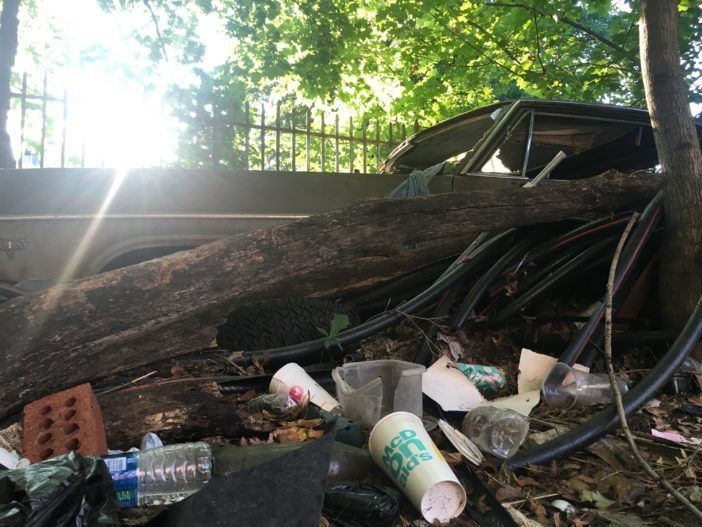
The cars look frozen in time at the scene of an apocalyptic event; eaten by rust, with broken glass littering the hoods and seats. Only the chrome bumpers — trademark of vehicles from the 50s, 60s and 70s, one DOS worker on site told us — still glimmered in the sunlight.
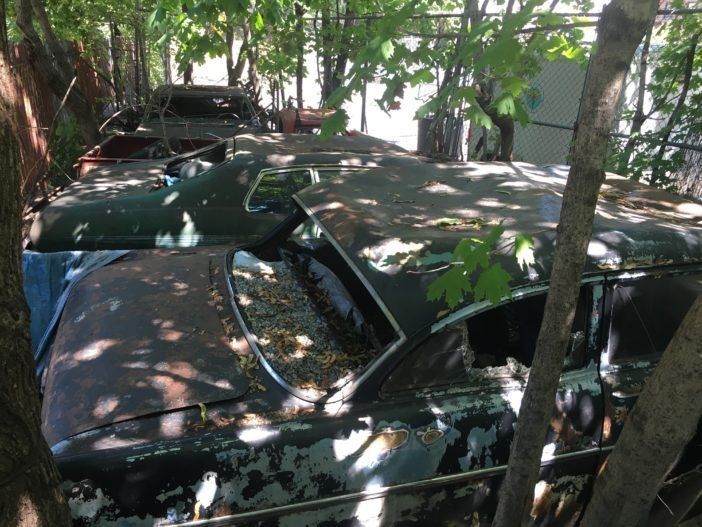
A glimpse of the lot’s history: A cyclical journey through deeds and records
Our zombie lot #26, block 5119, sits at 210 East 16th Street between Beverley Road and a dead end block overlooking the train tracks. The lot’s owner, Andrew Kwasnicki, bought the property from the City for $2,300 in 1981, according to Department of Buildings financial records.
Neighbors told us that Kwasnicki was an absentee neighbor, he lived in Woodstock, New York, and was all but unreachable, said one homeowner on the block. He allegedly tried to sell, but then realized that the residential zoning was too restrictive (though the market value on the property rose by $42,500 over the past decade, according to NYC property tax bills.)
“You can’t build on it or turn it into a parking lot, so it’s become nothing,” said East 16th Street homeowner Hannah Taylor. “No one cares about something on a dead end block.”
During that time, trucks would dump huge amounts of debris on the lot, but there was no one to hold accountable. Between 2004 and 2008, Gayle, a tenant on the block, tried to get the lot turned into a community garden, but was constantly thwarted by the unreachable owner.
“Every time the city officials came by, there was a new problem,” said Gayle. “The fence behind the lot was in disrepair, but the garbage in the lot prevents them from getting to that fence. After a while, I bought fences from home depot and spent $150 to try to cover the lot because it was so ugly to look at.”
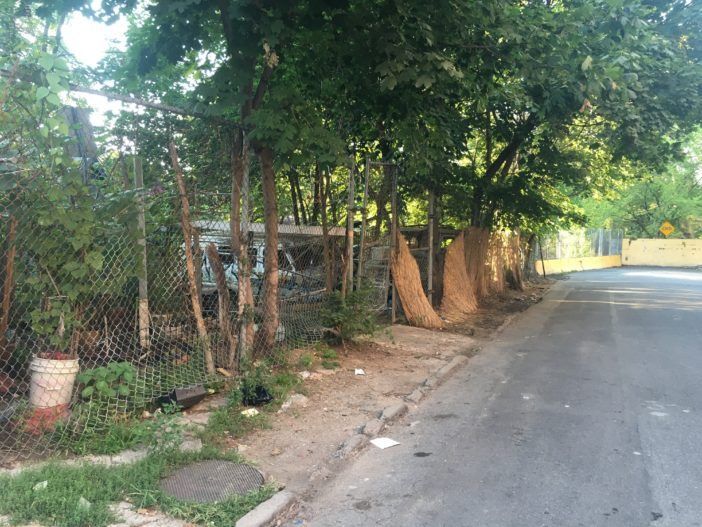
In 2006, the city slapped an illegal zoning violation and a padlock order on the property — masses of cars had been dumped on the R7A residentially zoned lot, which pushed the property into a manufacturing and commercial use classification. But the padlock has rendered the lot in a permanent state of limbo: the property remains essentially inaccessible to city services, including the Department of Sanitation, without legal clearance. The gate, however, remains unlocked.
As many as 10 junk cars, 1 motorcycle, old mattresses, used tires and bags of trash were left abandoned on the 91×24 foot lot at the time of their inspection, according to DOB records, where they’ve since been rotting and incubating generations of rats.
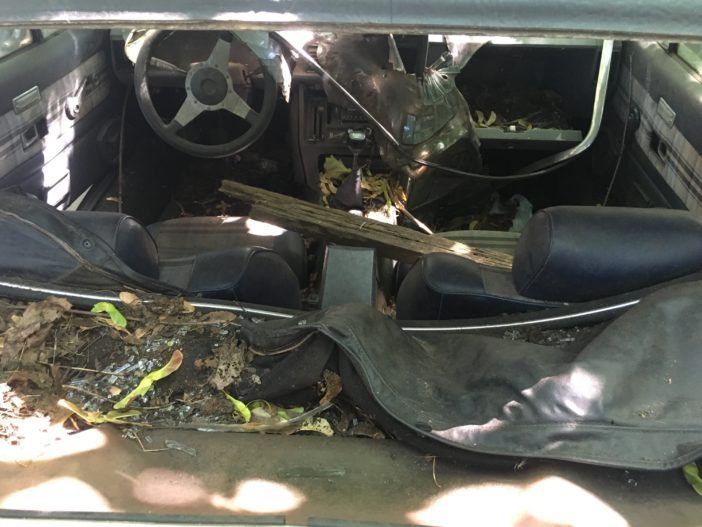
To stack on even more layers of red tape, tax lien certificates for the lot have been sold and assigned to the Bank of New York Mellon, once in 2014 (for $18,379.38 plus interest and fees) and a second time in 2016 (for $7,278.55 plus interest and fees). Kwasnicki had apparently been ignoring both the cars and his taxes.
The City sold the tax debt as liens, or a tax-sale certificate, which are sold to investors as a way to recoup losses from unpaid taxes. But even though Bank of New York owns the tax-lien, Kwasnicki still owns the property at 210 East 16th Street — though the bank can choose to foreclose on the property and take ownership if he fails to pay the taxes (plus interest) on time.
Essentially the tax lien sale just foisted responsibility from an absentee owner to an absentee bank, which is a common outcome of tax lien sales according to Lead Facilitator Paula Z. Segal of 596 Acres.
The City buried its leverage over the property in the tax lien sale, and while the property rots, accountability shifts away from the private property owner, for defaulting on their taxes, and the city agencies, who no longer have to enforce those defaults, according to an article on 596 Acres.
But the banks are equally hard to penetrate, a Community Board spokesperson told us, and because the cars and lot are both private property, the Department Of Sanitation (DOS) can’t touch them.
The Private Property Black Hole:
On July 11, the DOS conducted a compliance inspection, but they can’t clear out the cars and debris without getting an order from their legal department and the DOB, because the property is both padlocked and privately owned.
Neighbors issue enough complaints through 311 and Community Board 14, to bring a DOS trash clean up crew for routine maintenance about twice per year, DOS workers confirmed.
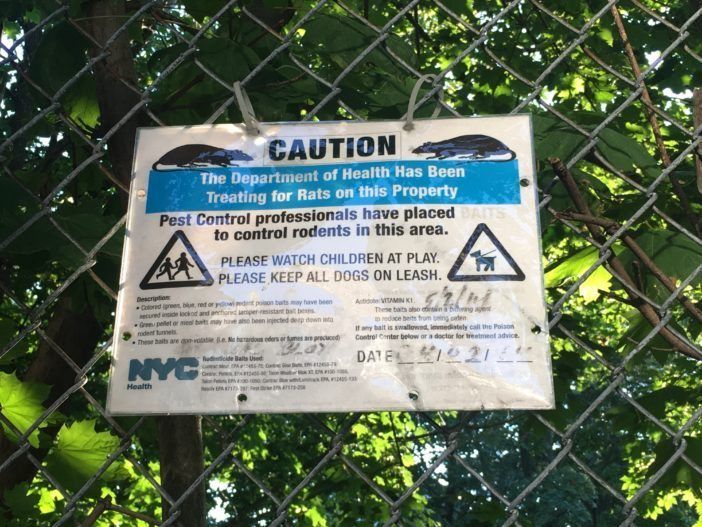
On August 24, we caught DOS crew sweeping, removing trash, pulling weeds and cutting down a makeshift basketball hoop nestled into the barbed wire fence. Legally, they aren’t allowed to touch the cars, which are private property, they reiterated in person.
The lot looked — relatively — neat. You could actually see the ground in between half-buried car wheels and the more histories pieces of trash; shopping carts with stray wheels, a weathered plastic Fischer-Price bike, a basketball backboard, and aluminum tins stowed underneath grates. Someone leaves food out here for the cats, said one DOS worker, but he didn’t have the heart to throw it away.
To remove the cars, DOS workers told us, they could go through the Derelict Vehicles Operation department, but based on the rules and regulations statement, the DVO has authority to remove abandoned vehicles from city property — streets and highways. There is no mention of private property.
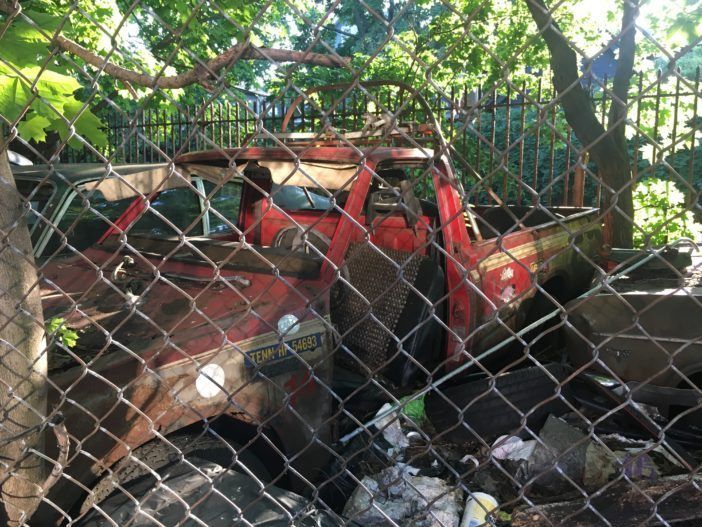
A Community Board representative told us that the board is advocating for removal of those vehicles, but the process of converting a privately owned lot into a community space is a thick tangle of bureaucratic weeds, way deeper than any pile of trash. Community Board 14 has been engaged with this property since 2014, said a CB spokesperson, but there is a lack of clarity over which agency has jurisdiction over the occupied property.
Right now, the laws protect private property owners, the spokesperson said. To take steps toward removal and permanent clean up, there needs to be more more accountability from the person who’s name is on the deed.
In addition, the property falls just outside the boundaries of every neighborhood block association. Below, see the lot skirt the borders of Prospect Park South, Beverley Square East and West, and Caton Park, Albermarle/Kenmore Terrace, and Ditmas Park and Ditmas Park West.
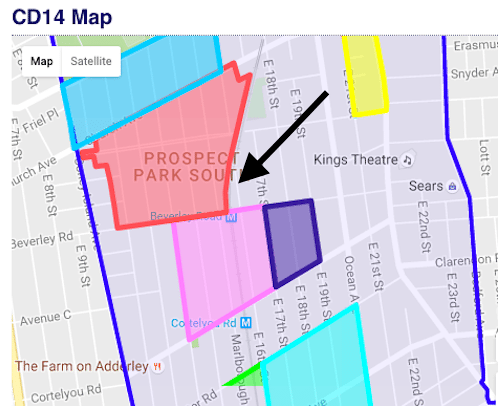
The Waiting Game:
Waiting is a common theme when it comes to vacant lots. A 2015 film “The Good, The Bad, & the Ugly” made by the Center for Urban Pedagogy, documented Flatbush High Schoolers as they dug up the dirt on the dozen vacant lots surrounding Bedford and Rogers Avenues. The whole film is underscored by a ticking clock as everyone waits for permission and accountability — to get answers from city agencies, construction sites, public officials and property owners.
In our research, we spoke to neighbors, scoured finance records, consulted with experts, called (and left voicemails for) city agencies, but still emerged with more questions than answers. But the endless waiting game is exactly how these vacant lots in our communities persist, frustrated neighbors get bogged down in the hamster wheel of agencies and records.
“Probably one of the things that makes a lot empty is because no one had any good ideas about what to do with them,” said Mark McIntyer from the NY Office of Environmental Remediation, in The Good, The Bad & The Ugly. “And that the owner isn’t thinking about what could be done to make a profit, or to benefit the community.”
But this film, and the work of multiple community gardening organizations in Flatbush alone, prove that plenty of neighbors have great plans for vacant city spaces. In fact, many local community gardens, public murals and land trusts are the result of neighbors deciding to take action.
For example, Q Gardens, on East 18th Street between Church Avenue and Caton Avenue, is a thriving community garden started by two neighbors in 2012 — Anne Schoeneborn and Ali Jacobs. It took two and a half years of organizing and resources from 596Acres to rally community stakeholders, local businesses and residents, around their vision for a community-led green space.
“I moved onto the block and was walking past this lot every day on my way to the subway, its very visible from the sidewalk with a chain link fence so I couldn’t not notice it,” said Anne Schoeneborn. “It was overgrown, full of trash — it looked so enticing!”
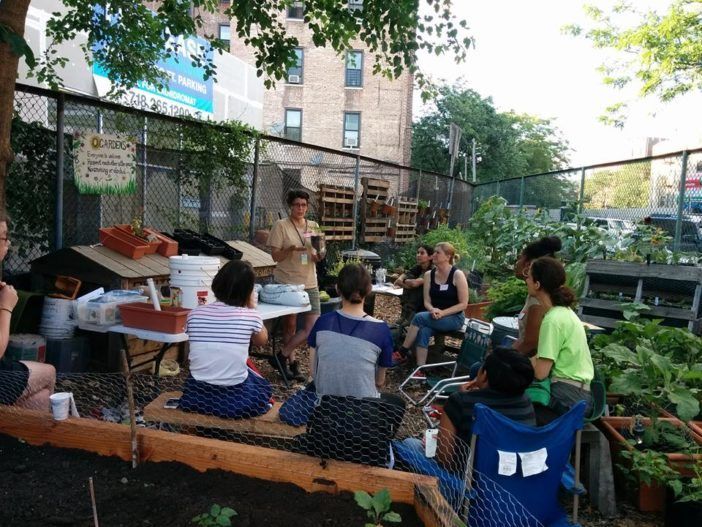
In Prospect-Lefferts Gardens, a concerned block association transformed a trash-strewn lot, that was a dumping ground for washing machines, tires and household rubbish, into the thriving Maple Street Community Garden in 2013, with sponsorships from Council Member Mathieu Eugene and Borough President Eric Adams. The garden bypassed the lot’s unresponsive owners, and though they ran into trouble in 2014, the overwhelming support from community grants, local politicians and neighbors helped support the efforts.
How to start a rally for our lot at 210 East 16th Street:
Organize and educate: Looking for a neighborhood project? Living Lots NYC is an incredibly comprehensive website that takes you through every step of transforming a vacant lot into a community space, from data mapping to dialogues with city agencies.
They also have an interactive map of community gardens in the neighborhood, including the Flatbush CommUNITY Garden just yards away (and on private property), on the other side of the tracks of East 16th Street and Albermarle Road.
Put pressure on City Council: While the clean-up orders crawl through the city agencies, residents can reach out to District 40 City Council Member Mathieu Eugene, proposing he put pressure on the city to reclaim the lot in the short term, and in the long term write legislation that would allow the city to access vacant properties.
Learn more about how to work with private landowners here.
And last but not least, check out the amazing resource guides at 596acres.org to get your new community garden started. Adding 210 East 16th Street to the map and hanging signs on the lot can encourage neighbors to think of the lot as a potential community asset, instead of just a rotting dump site.
All photos by Ditmas Park Corner.




